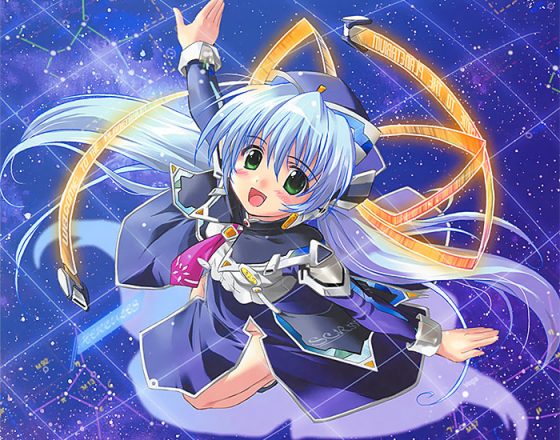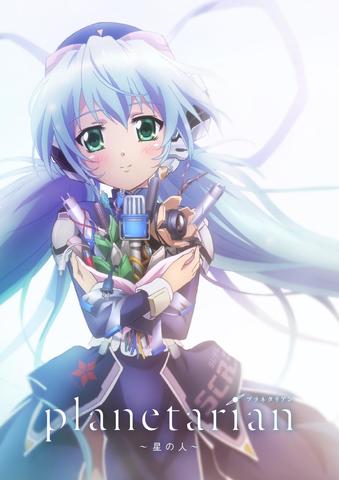
Key is a visual novel company that influenced the nakige (crying game) subgenre and anime medium. Touting some of the most influential stories within the industry, Key’s anime have gained fans worldwide with their adaptations of Air, Kanon, and Clannad.
Out of the early Key visual novels, Planetarian is a story that takes place in a post-apocalyptic setting where humans have destroyed much of the earth. Written by Jun Maeda, Key’s main scenario writer, composer, and co-founder, Planetarian’s story is a unique twist on Maeda’s writing.
For this article, I’d like to go deeper into Planetarian’s story and core ideas. With some context and a bit of analysis, I hope to explain the intricacies of Planetarian’s structure and the methodology of Maeda’s writing.
Context and Early Visual Novel Localization
Coming out in 2004, Planetarian contrasted from Key’s previous stories, Kanon (1999) and Air (2000). Commonly, in Key visual novels, it’s the protagonist that solves a heroine’s problem. Borrowing from other visual novels of the time, Key VNs used a popular structure.
By separating heroines into their individual stories, readers could choose their favorite heroine, pursue their story, learn how it weaves into the grander themes of the work, and ultimately reach that heroine’s ending. This type of formula allowed the main character to parallel the player, making choices that influenced the story.
With Planetarian, however, the story is kinetic, meaning there are no choices. Furthermore, the short length of the story (roughly 8 hours) made the story concise and approachable for new VN readers.
This last fact helped its “unofficial localization” in the West. At the time (the early 2000s), visual novels were rarely localized outside of Japan. Early VNs were either translated by fans (Tsukihime, Narcissu) distributed as non-PC, DVD player only formats (Phantom Inferno, Hourglass of Summer), or on the rare occasion, released as a PC game (Ever17).
As such Planetarian was one of the earliest works that influenced an English-speaking VN audience.
A New Pace to the Beating Heart
Those familiar with Key will notice Jun Maeda’s archetypal setting. Kanon, Clannad, Angel Beats, and Little Busters all feature a school setting. One advantage of this setting is familiarity. Most audiences will have some memories of school, and by linking those memories to a setting, an author can invoke a sense of nostalgia and early childhood romance. Commonly in Jun’s works, he will also slowly integrate supernatural/spiritual elements later. These aspects of his story twist the traditional love story into something more overarching.
In contrast to his other works, Planetarian, takes place on a devastated, futuristic earth. Marked by a constant downpour, cities are now abandoned to all but machines. Instead of invoking nostalgia--Jun rips it out of the picture. Looking back on the past is just a painful reminder: humanity destroyed itself.
Starting the story with such a low point establishes a norm. In Jun Maeda’s works, the transition from this normal world to the next is commonly done through an intervention--the choice of the player.
However, Planetarian has no choices, therefore Jun must change how characters develop.
A Change in Formula: Love for All
For the majority of the story, there are only two characters: Kuzuya, the Junker, and Yumemi, a broken but optimistic robot. Familiar readers will know Jun is a craftsman of love. As a romance writer, it’s no surprise, however, unlike his other works, romantic love is not in Planetarian.
If the common trend in Jun’s work is to have a protagonist change a heroine, and in turn, love changes them both, then Planetarian is a switch of the formula. In Planetarian, the character who changes is not the heroine, but the protagonist. The heroine is a robot, therefore incapable of change (in this setting).
Thus, she has what is called a “flat character arc.” This means that she does not undergo major developments. Authors will use characters with flat character arcs to prove that a constant exists in the world--that despite the world changing around them, there can exist a truth.
In the case of Planetarian, it’s the optimistic robot who changes the Junker. Kuzuya, hardened by more than just the weather, has seen humanity’s worse. In the anime, they go further into this, showing his wartime experience. With time, humanity has not built itself towards the stars; they’ve doomed themselves to never see them.
Thus, part of this story’s intrigue is to see how Maeda adapts his themes into a darker setting. In a world where humanity has killed one another, Jun must prove love can live--that love doesn’t have to be towards one person; it can be towards all.
A Brief Reverie: 3 Days in a Dream
Maeda’s works are not just romance or comedy. To be a part of the nakige subgenre, he must make use of tragedy. In Planetarian, Jun Maeda uses a classic romance trope: the chance meeting.
As readers learn, Yumemi wakes up at the Planetarium due to a backup generator. However, in a clear echoing of the end, that same generator dies, and Yumemi’s constant sleep cycles conjure a more sinister meaning.
Having changed, the Junker believes in the same humanity that once destroyed itself. Yumemi’s optimism has shown him a new (star) light, and he pursues an escape with her in tow. However, as he nears the city’s borders, a war machine shoots at the Junker.
To protect Kuzuya, Yumemi walks towards the robot, her arms open as if to hug it. In her eyes, that robot is just a little broken--just like she is. The robot shoots its cannon towards Yumemi. In that time, Kuzuya shoots back, saving himself, but not Yumemi.
In the story’s final scene, Yumemi has several minutes before she falls “asleep.” As rain fills her vision, “tears” start to form. Before she dies, she shares memories still dear to her heart with the Junker.
It’s in these moments, we understand the show’s subtitle. Yumemi is a light in a dying world, a hope for time to turn back once more. Her dream is a faint nostalgia of times long past. It’s a dream shared by humanity and robots:
the Reverie of a Little Planet.

Final Thoughts
Having grown up with Key stories, a lot of my early childhood was influenced by Jun Maeda’s writing. Decades later, I still hear fans talk about how much they revisit his older works, recalling their high school memories. Key’s stories have gone to change the industry as a whole, and with that change came a new understanding of bittersweet love.
Recommended Post


